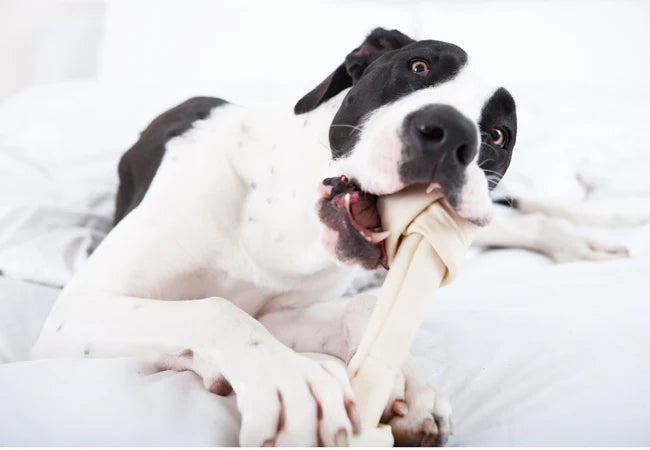Vet‑Approved 2025 Guide: 5 Unique Ways to Provide Mental Stimulation After Dog Surgery 🐶🧠

In this article
Vet‑Approved 2025 Guide: 5 Unique Ways to Provide Mental Stimulation After Dog Surgery 🐶🧠
By Dr. Duncan Houston BVSc
After surgery, dogs often need limited physical activity to heal—but their brains still crave stimulation! Boredom can cause stress, anxiety, and unwanted behaviors. This 2025 guide outlines five creative, gentle, vet-recommended ways to engage your dog's mind during recovery. Each tip is safe, enriching, and designed to support emotional well-being even while your pup takes things slowly. It also highlights Ask A Vet, tools to help you foster a calm, healing environment. 🐾✨
🔍 Why Mental Enrichment Matters Post-Surgery
Mental engagement is essential—especially when physical exercise is off-limits. It helps reduce anxiety, prevents boredom behaviors like chewing or whining, and supports a positive recovery mindset. Post-surgery, your dog may feel confined or stressed, so targeted brain games can help them stay calm and happy.
1. 👁️ Watch Me” & Touch” Target Training
These simple commands provide mental focus without movement:
- Watch me”: Encourage your dog to look into your eyes. Rewards strengthen focus and bonding.
- Touch”: Train them to touch your hand with their nose—no jumping or reaching required.
Both exercises are easy, calming, and suitable for bed rest. They reinforce good behavior during recovery without physical strain.
2. 🧩 Enrichment Through Slow Feeding
Turn meals into puzzles to slow eating and engage their brains:
- Slow-feed bowls: Makes them work a bit to access food.
- Frozen broth pops: Fill a mold with low-sodium broth and kibble, then freeze—engaging and soothing.
- KONG stuffed treats: Fill with softened food or yogurt, then freeze to extend interest.
Slow feeding means more mental challenge with minimal movement.
3. 📺 Soothing Audio–Visual Inputs
Ambient sounds and visuals can reduce stress:
- TV with nature scenes: Dogs may find gentle movement and sounds calming.
- Classical music: Proven to ease anxiety in kennels and home settings.
Keep volume low and monitor your dog’s response—they may find gentle TV soothing during quiet recovery.
4. 🌬️ Controlled Outdoor Exposure
Fresh air and new smells can greatly improve mood:
- Stroller or car window time: For dogs restricted from walking.
- Short leash sniff time: If allowed, a brief sniff-and-stay session on safe ground.
A few minutes outside provides mental refreshment—just ensure activity restrictions are respected.
5. 🧠 Sniff & Scent Games
Sniffing is naturally enriching and restful:
- Hide treats in a snuffle mat or around recovery area.
- Scatter small treats on a towel or soft surface for sniff recovery.
This minimal-movement activity stimulates the nose and brain, providing comfort and engagement.
⚠️ Dos & Don’ts During Recovery
- ✅ Do keep games short and gentle—5–10 minute sessions are ideal.
- 🚫 Don’t encourage jumping or running—even brain-based play should keep them calm.
- ✅ Always follow your vet’s advice on activity limits.
Unstructured physical activity can harm healing tissues—mental challenges should be central.
🛠️ Combining Enrichment with Healing
Use these supportive tools to enhance recovery:
- Ask A Vet: Share progress, ask for activity guidance, or send photos—without clinic visits.
📊 Recovery Timeline & Enrichment Progression
Match mental stimulation to healing stages:
- Days 1–3: Short training sessions and snuffle mats at rest spots.
- Weeks 1–2: Add slow-feed toys and stroller outings (if vet-approved).
- Weeks 2–4: Introduce scent walks and longer puzzle games, as recovery progresses.
- 4+ Weeks: Resume safe indoor interactions—light obedience, gentle massage (see benefits below).
💆♂️ Bonus: Gentle Massage Benefits
Massage helps reduce muscle tension, promote circulation, and calm the nervous system. Focus on the neck, shoulders, and back—avoid surgery areas. Short sessions (2–5 minutes) can aid comfort and connection.
📞 When to Reach Out to Your Vet
Contact your vet or use Ask A Vet if you notice:
- Strain or discomfort during enrichment
- Excessive panting, whining, or agitation
- Incision swelling, redness, or discharge after activity
🏁 Final Thoughts
Mental enrichment is essential during physical recovery—it keeps your pup happy, calm, and engaged. These five creative, low-impact strategies—trained cues, slow feeding, soothing audio, gentle scent work, and soothing massage—help support healing and emotional well-being. Use vet‑endorsed tools like Ask A Vet, to build a nurturing environment, and you'll help your dog recover with comfort, joy, and peace of mind. 🐾💖






